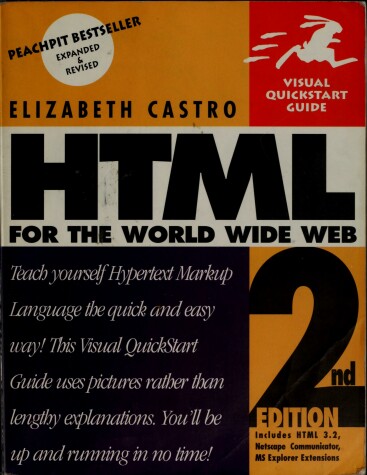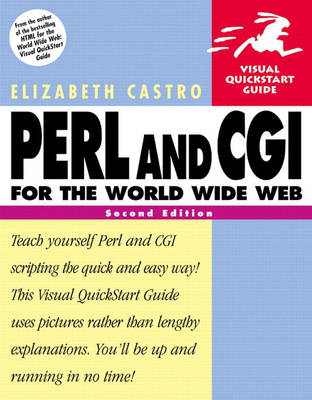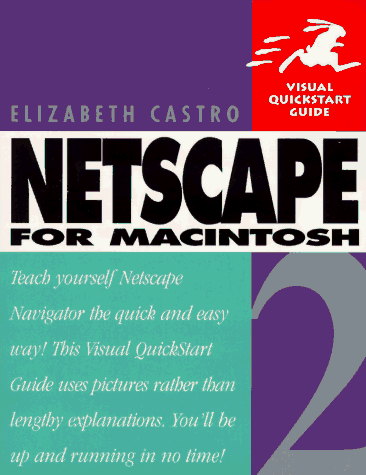Visual QuickStart Guides
4 total works
Perl and CGI for the World Wide Web:Visual QuickStart Guide
by Elizabeth Castro
Perl is one of the most popular scripting languages for adding powerful interactive features to Web pages. Perl lets you place forms on your site that collect and process user input such as comments and product orders; enables visitors to search for information; and can integrate a database into your site, among its many other capabilities. Perl and CGI for the World Wide Web, 2nd Edition: Visual QuickStart Guide fully revised and updated since its original 1998 release, gets users to the core of CGI scripting with Perl. Even first-time programmers will be able to create useful, workable scripts from scratch, or adapt and customize existing scripts to their own needs. Hundreds of screen shots and clear, easy-to-understand directions make this the perfect Perl book for beginners, as well as a handy reference for those with previous programming experience.
Web-maven Elizabeth Castro, who has penned Peachpit books on HTML,Perl and CGI, and Netscape, now tackles XML--an indispensable tool for creating personalized, updated content for each visitor on your site. Whether you build Web pages for a living or you're taking on anew hobby, XML for the World Wide Web contains everything you need to create dynamic Web sites by writing XML code, developing custom XML applications with DTDs and schemas, transforming XML into personalized Web content through XSLT-based transformations, and professionally formatting XML documents with Cascading Style Sheets.The real power of XML lies in combining information from various sources and generating personalized content for different visitors.Castro's easy-to-follow graphics show exactly what XML looks like,and her real-world examples explain how to transform and streamline your Web-site creation process by automatically updating content.



